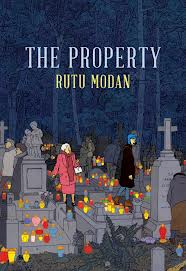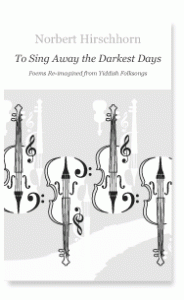Jewish Literary Links for Shabbat

Shabbat shalom.

Shabbat shalom.
 These days, motivated in part by space constraints (I live in a New York City apartment and I’ve run out of bookshelves), and in part by financial ones, I think very hard before I buy a book. Generally speaking, I depend on libraries for many of the books that I don’t receive as review copies. And when I do buy a book, I’m often inclined to purchase the Kindle version.
These days, motivated in part by space constraints (I live in a New York City apartment and I’ve run out of bookshelves), and in part by financial ones, I think very hard before I buy a book. Generally speaking, I depend on libraries for many of the books that I don’t receive as review copies. And when I do buy a book, I’m often inclined to purchase the Kindle version.
All of this a preface of sorts. Because something unusual happened a few days ago. I began reading Rutu Modan’s latest book, The Property. Translated by Jessica Cohen, this graphic novel depicts a grandmother-granddaughter pair on a journey from Israel to the grandmother’s native Poland, ostensibly to investigate the reclamation of the grandmother’s former home. About two minutes into my reading, I knew that this book was something special. And even though I read the entire book in one setting, I knew that I’d want to read it again. Maybe more than once. Maybe even after it was due back in the library. So I’ve gone ahead and purchased a copy of my own: a print copy.
In short, I loved this book. But instead of writing a more complete review/description/analysis of my own, I’m going to point you to some illuminating items that are already available online. (I’ll also note that, to date, several of the five-star Goodreads reviews that I’ve read echo my own impressions.) I hope that these materials will help convince you to spend some time with The Property, too:
Finally, as a bonus of sorts, you might want to read through Modan’s account of “a week in culture” for The Paris Review (trans. Sivan Ben-Horin).
 Published by Holland Park Press, To Sing Away the Darkest Days: Poems Re-imagined from Yiddish Folksongs “is the culmination of a five-year project which saw Norbert Hirschhorn source more than one thousand Yiddish songs from several archives and from collections on the Internet, as well as from CDs.” I learned about this book through a post that the publisher contributed to the Jewish Book Carnival Goodreads group, and when I received an offer of a review copy, I accepted.
Published by Holland Park Press, To Sing Away the Darkest Days: Poems Re-imagined from Yiddish Folksongs “is the culmination of a five-year project which saw Norbert Hirschhorn source more than one thousand Yiddish songs from several archives and from collections on the Internet, as well as from CDs.” I learned about this book through a post that the publisher contributed to the Jewish Book Carnival Goodreads group, and when I received an offer of a review copy, I accepted.
The book’s first half is devoted to Hirschhorn’s “re-imaginings” (his term) of the old Yiddish songs. Some source material is likely to be familiar to many readers: “Mayn Yidishe Mame” and “Rozhinkes Mit Mandlen,” for instance. But plenty of Hirschhorn’s inspiration comes from material that I hadn’t encountered before.
Beginning on page 57, the book’s focus turns to “Sources, transliterations, literal translations, [and] links to music.” Starting with the book’s first poem and proceeding anew to the last, the reader finds a transliteration of each song’s original Yiddish text, a literal translation into English, historical background and notes, and, where possible, links to audio or video. I’m still trying to decide if I might have preferred having all of this information directly follow each of the poems instead; the format selected requires a lot of flipping back and forth for the reader who wants edification as she goes along, poem by poem.
In any case, Hirschhorn has done something wonderful here, and I encourage readers interested in Yiddish language and literature (as well as in poetry itself) to investigate. I’ll even recommend a place to start: Hirschhorn’s publisher has created a page with links to some of the songs behind the poems. Go over there, and enjoy.

Shabbat shalom.
Monday brings the weekly batch of no-fee competitions/contests, paying submission calls, and jobs for those of us who write (especially those of us who write fiction, poetry, and creative nonfiction). (more…)